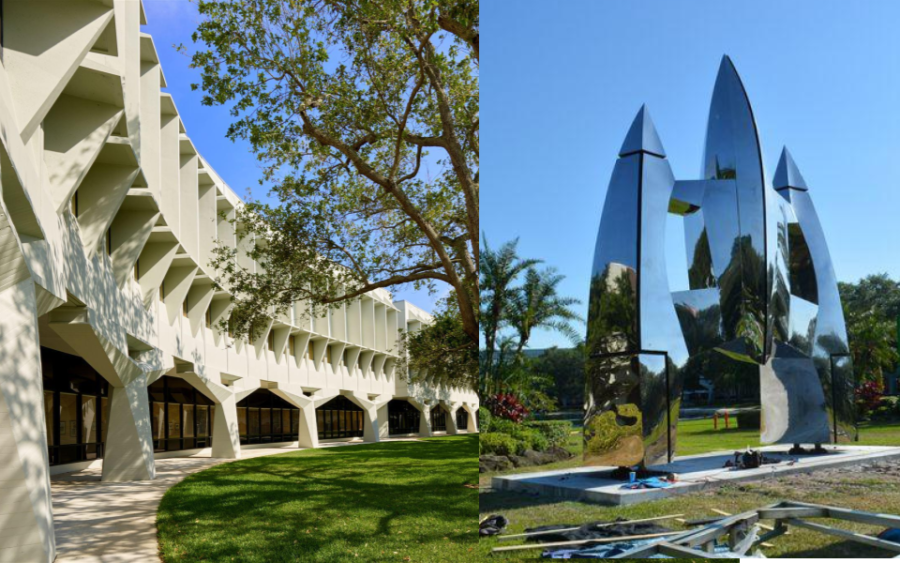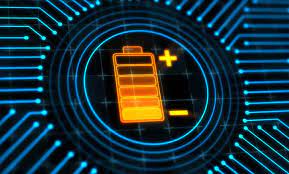The Boca Raton Innovation Campus was originally built in 1960’s by IBM as its North American Research and Development facility. It became home to the invention of the first personal computer.
The following written content from Brett Shweky
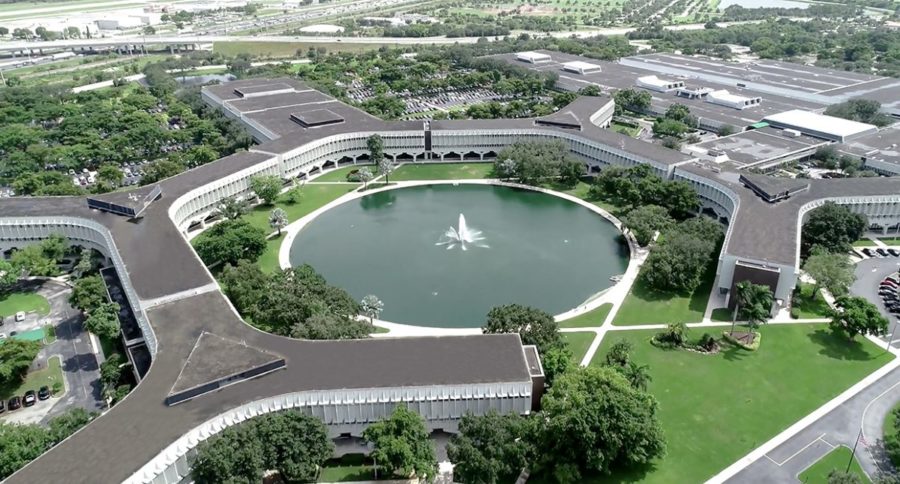
Hubert Phipps’ 30-foot stainless steel sculpture “Rocket” traveled over 8,000 miles to arrive as the new centerpiece at Boca Raton Innovation Campus, 5000 T-Rex Ave.
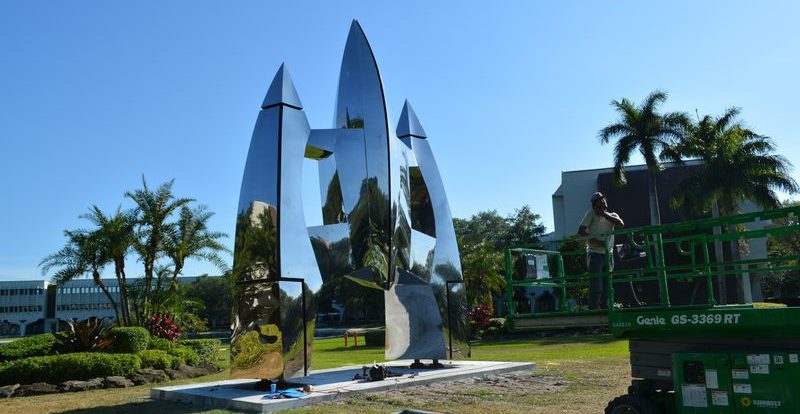
Inspired by the artist’s love of aerodynamic forms, the steel sculpture’s full-scale fabrication began in 2019. Faced with a string of challenges, Phipps, who is highly respected for his abstract sculptures and paint pigment drawings, overcame a pandemic and thousands of miles of shipping to see his sculpture finally touch down in Boca Raton.
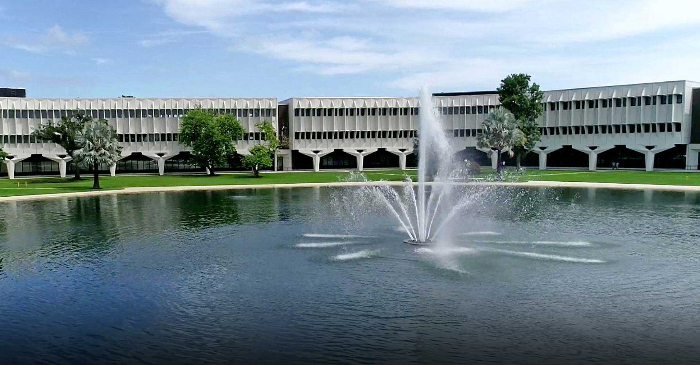
Crocker Partners, a commercial real estate business, aligned with the Boca Raton Museum of Art to add the sculpture to the campus art collection, making it the Boca Raton Innovation Campus’ landmark statement piece as part of a full-scale indoor and outdoor art museum.
“‘Rocket’was conceived as that intersection between art and science and celebrates the heroics of modern engineering as also seen in Marcel Breuer’s building designed for IBM’s Research and Development Headquarters in 1970 (which is now the BRiC campus),” Irvin Lippman, the museum’s executive director, said in a statement.
The monumental ‘Rocket’ boldly captures that heroic lift-off with a sense of awe and wonderment. Its polished surface further enlivens the sculpture reflecting the sky, lawns, lights, and the people moving around the park, welcoming interaction with visitors — perfectly encapsulating the experience of art in public places.”Read more from Sun Sentinel
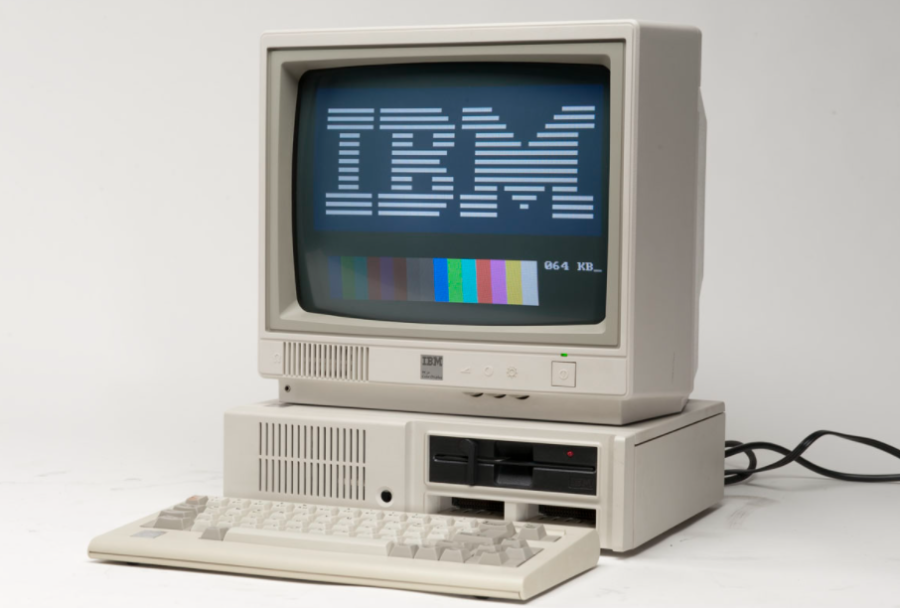
Birthplace of the Personal Computer-A brief history
International Business Machines IBM
The following written content from Boca History
IBM began as the Computing-Tabulating-Recording Co. (C-T-R), a corporation composed of three companies that manufactured tabulating machines, scales, and time recorders. In 1914, Thomas J. Watson Sr. joined C-T-R as general manager. He became president in 1915 and C-T-R was renamed IBM shortly afterward. The three companies which merged in 1911 to form C-T-R included The Computing Scale Co. and the International Time Recording Co.. Dr. Herman Hollerith founded the third company, The Tabulating Machine Co. in 1896 after devising a series of electrical machines that processed data stored on punch cards. These machines reduced tabulation time for the 1890 U.S. Census from seven to three years. The tabulating machine can be considered a grandfather of today’s computer.
IBM’s growth was due in large part to the 57-year reign of Thomas J. Watson Sr. and his son Thomas J. Watson Jr.. Thomas J. Watson Sr. created a strong sales force and business philosophy that emphasized excellent customer service, superior performance, and respect for the individual. After World War II, IBM’s entry into the computer industry began with the production of a vacuum tube computer in 1952. Thomas Sr.’s son succeeded in establishing IBM as the largest computer maker in the United States, primarily in the mainframe computer business.


In 1967 Thomas John Watson Jr., then Chairman of the Board, announced that IBM would open a large-scale manufacturing plant at Boca Raton to produce its System/360 Model 20 midsized computer. In December 1966, IBM announced its purchase of 550 acres west of what is now I95, south of Yamato Road and east of Military Trail.
IBM was the first company to build an industrial site in the scrubland of the west.
The original site eventually grew from 620,000 square feet to 3.6 million square feet in more than 40 buildings. The main complex was modeled after IBM’s research center located in LaGaude, France on a rugged slope just ten miles from Cote D’Azur. Marcel Breuer and Robert Gatje, the famed architects who created the LaGaude building adapted the design for Florida’s flat terrain and hot sun.
The Boca Raton plant originated as part of IBM’s General Systems Division responsible for developing, manufacturing, and marketing low-to moderate-priced computers and business systems. The complex became both a research facility and manufacturing plant. Engineers, electronic specialists, computer scientists, assemblers, secretaries, and shipping clerks comprised a staff that began with 400 employees, peaked around 10,000 employees in 1985 and remained at approximately 1,500 since the late 1980s.
The Acorn
In August 1981, IBM launched a new product that put the city of Boca Raton on the map. A small engineering team led first by William Lowe and then by Philip “Don” Estridge, secretly developed a personal computer (code name “Acorn”) that was to be ready for market within one year. Under pressure to meet an incredibly tight deadline and with autonomy from management unprecedented in IBM history, a small team created a personal computer that became the standard for the PC industry. Rather than develop all the parts internally, the team, incorporating an “open architecture,” quickly pulled together existing resources from outside companies.
Microsoft provided the operating system (DOS) and BASIC programming language; Intel the 8088 microprocessor chips; Tandon the disk drive; Zenith the power strips; SCI Systems the circuit board; and Epson the printer. The open architecture allowed for add-on components to the internal system. Also for the first time, IBM sold this product through outside sources; Sears, Roebuck, and Company and Computerland, were the official retailers for the PC.
The success of the IBM PC was so great that demand quickly exceeded estimated sales of 250,000 machines; IBM sold twice that number in the PC’s first eighteen months on the market. In 1983 Time Magazine named the computer, “Machine of the Year,” the first time ever that an object rather than a person won the esteemed award. The birth of the IBM PC in Boca Raton, brought other high-tech companies to the area, increased employment opportunities, and fueled the transformation of Boca Raton from resort town to business center.

The success of the IBM PC resulted in the rapid growth of IBM Boca Raton. Staff size grew to over 10,000 to keep pace with the demand for the PC. IBMers eagerly accepted positions at Boca Raton for within IBM ranks; it had gained a reputation for being a place of exciting and revolutionary work.
Many organizational changes occurred during the 1990s. In the late 1980s, IBM decided to move hardware manufacturing to Raleigh, North Carolina, and software manufacturing to Austin, Texas. By the early 1990s, implementation of these decisions was complete – many employees were transferred to the North Carolina and Texas sites. By the mid-1990s, Research and Development for the PC was moved from Boca Raton to North Carolina to be closer to hardware manufacturing.
After all these changes, the remaining staff of 1500 worked in IBM offices located in West Palm Beach, Boca Raton, Fort Lauderdale, and Coral Gables. In time, IBM “Boca Raton” became better known as IBM “South Florida.” From the 1990s to today, IBM South Florida has continued its worldwide impact on technology, both software and hardware. IBM South Florida engineers have been directly involved in voice recognition technology and advanced business solutions we all encounter in everyday life. T
oday IBM is once again on the cutting edge of technology and its applications. The voice recognition technology developed in Boca Raton gives supercomputer WATSON his voice and IBM’s Smarter Planet initiative hopes to help build a better, more efficient world.
Since 1971, 1,882 patents have been issued to inventors working at IBM locations in Florida. Of those, 1,440 are focused on key technological areas of interest to IBM South Florida locations, including Personal Computers, Operating Systems, Personal Computer accessories, communication, speech recognition, and mobile devices.

